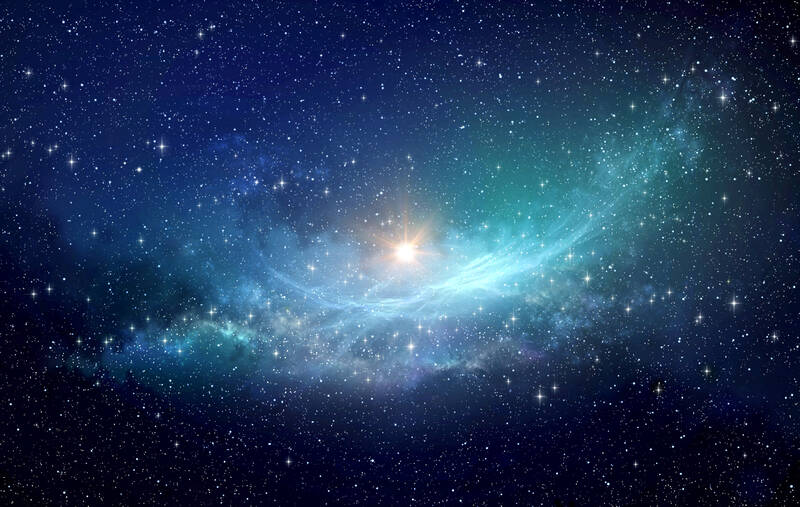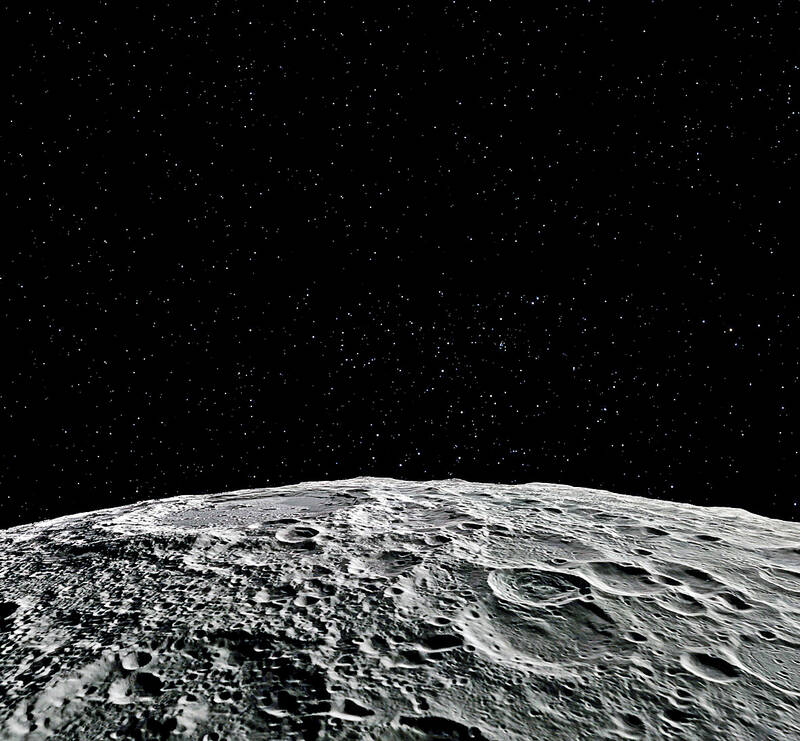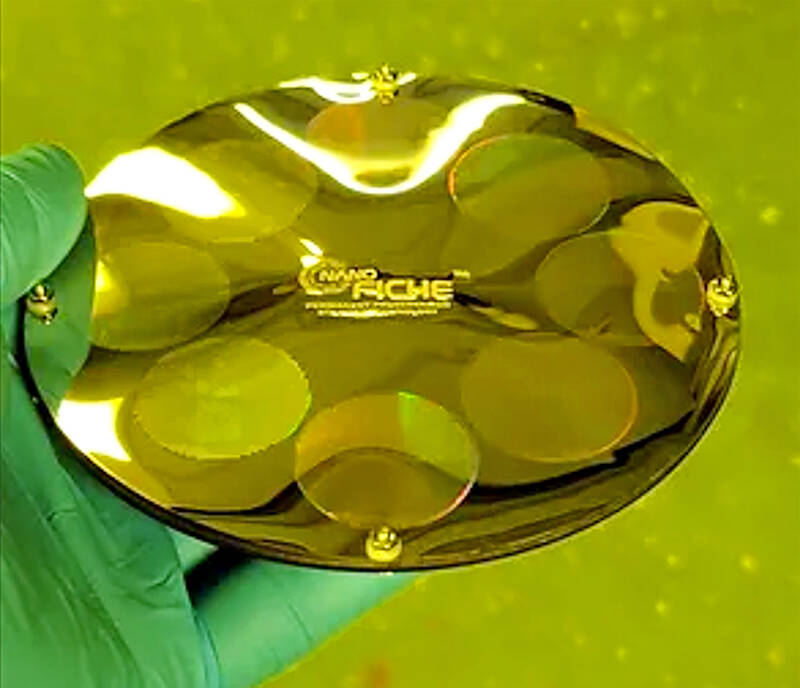Art can be found almost everywhere on Earth. There are statues on mountaintops, sculptures beneath the sea and art exhibits held in the middle of deserts. A group of over 30,000 artists has recently come together to place their works in an entirely new location — the Moon.
The project, named the Lunar Codex, is dividing pieces they’ve gathered into five collections. The first one, the Orion Collection, was already launched into space to orbit around the Moon in 2022 on NASA’s Orion spacecraft. The other four will be flown to different destinations on the Moon in future landing missions.
The Lunar Codex was founded by Canadian physicist, artist and entrepreneur Samuel Peralta. Growing up with a passion for both writing poetry and learning about space, Peralta dreamed of sending his poems to the Moon one day. Upon discovering that some lunar landing missions were selling spare cargo space on the ships, he reserved spots on five missions. While the primary objectives of these missions are to deliver lunar landers for scientific experiments, private organizations have been given the opportunity to reserve any spare cargo space for various purposes.

Photo: Ivy English I 照片:常春藤
地球上幾乎各地都能看見藝術。有在山頂上的雕像、海底的雕塑品,還有在沙漠中央舉辦的藝術展。有個三萬多名藝術家組成的團體近來要一起將他們的作品放上全新的地點──月球。
該計畫名為《月球密典》,他們將已經蒐集到的藝術品分為五批藏品。第一批獵戶座藏品已經在2022年登上NASA的獵戶座太空船被發送到太空,繞著月球轉。其他四批藏品將會在未來的登陸任務中被飛送到月球上的不同地點。
《月球密典》是由一名加拿大物理學家、藝術家兼企業家薩繆爾‧佩拉爾塔所創。佩拉爾塔長大的過程中對寫詩跟了解宇宙滿懷熱情,他夢想著有一天要將自己的詩送上月球。一發現有些登月任務有在販售他們火箭上多的貨艙空間時,他就在五次任務中預訂了位置。雖然這些任務的主要目的是要運送月球登陸器以供科學實驗使用,但私人機構也可以基於各種目的而有機會預定任何閒置的貨艙空間。

Photo: Ivy English I 照片:常春藤
Words in Use
1. sculpture n. 雕刻品,雕像
In recent years, the artist has used metal to create his sculptures.

Photo: Ivy English I 照片:常春藤
近幾年來,該藝術家使用金屬來打造其雕刻品。
2. exhibit n. 展覽(品)
The exhibit attracted a large number of visitors from around the world.

Photo: Ivy English I 照片:常春藤
這場展覽吸引了許多來自世界各地的觀展者。
3. launch vt. 發射(火箭)
The space shuttle exploded soon after it was launched.
該太空梭發射不久後就爆炸了。
Practical Phrases
1. divide A into B 把A分成B
Mom divided the cake into eight equal pieces.
媽媽把這個蛋糕平分成八塊。
To be continued tomorrow(明日待續)
https://www.taipeitimes.com/News/lang
聽文章朗讀及講解: https://ivy.pse.is/455bfu
本文出自常春藤解析英語雜誌: www.ivy.com.tw

Australia’s strict immigration policies have long been criticized, particularly for how they treat people with disabilities. Having been residents of Australia for years, Scottish Laura Currie and her Italian partner, Dante Vendittelli, recently experienced the impact of these immigration policies. Their son Luca, born in Australia and diagnosed with cystic fibrosis, became the reason their residency application was denied due to the anticipated high healthcare costs. Had Luca been healthy, there would have been no objections to their permanent residency. This case not only highlights discrimination against disabled individuals, but also raises questions about fairness and inclusion within Australia’s immigration

A ‘Dutch angle’ is a classic camera technique that has been used in filmmaking since the 1920s, when it was introduced to Hollywood by German Expressionists. Why is it called the Dutch angle if it’s actually German? In fact, it has no __1__ to the Netherlands. The term “Dutch” is widely believed to be a misinterpretation of “Deutsch,” which means German in the German language. In any event, the name stuck, and the Dutch angle remains a popular cinematic tool to this day. This technique involves tilting the camera on its x-axis, skewing the shot to create a sense of

A: After holding nine concerts in Kaohsiung and Taipei recently, “God of Songs” Jacky Cheung will stage three extra shows later this week. B: They’re compensation for the three shows he postponed last year due to illness. A: He also canceled three more shows in Guangzhou last month. His health is worrisome. B: When touring Guangzhou, he dedicated his hit “She Is Far Away” to late singer Khalil Fong. That’s so touching. A: Online music platform KKBOX has also launched a campaign to pay tribute to Fong. I can’t believe he died so young: he was only 41. A:

A: After “God of Songs” Jacky Cheung sang for late singer Khalil Fong recently, music streaming service KKBOX also paid tribute to Fong by releasing his greatest hits online. B: The 20th KKBOX Music Awards ceremony is taking place at the K-Arena in Kaohsiung tomorrow. Fong performed at the ceremonies in the past. A: Who are the performers this year? B: The performers include Taiwanese groups 911, Wolf(s), Ozone, Singaporean pop diva Tanya Chua, and K-pop group Super Junior. A: South Korean stars actually took four spots among KKBOX’s 2024 Top 10 singles, showing that K-pop is still